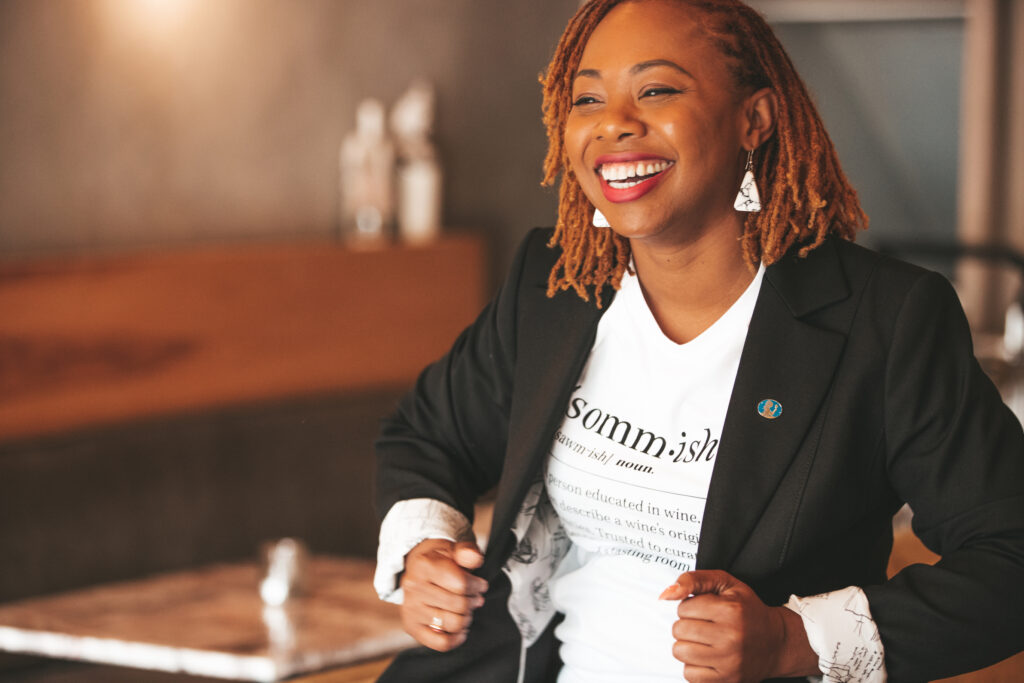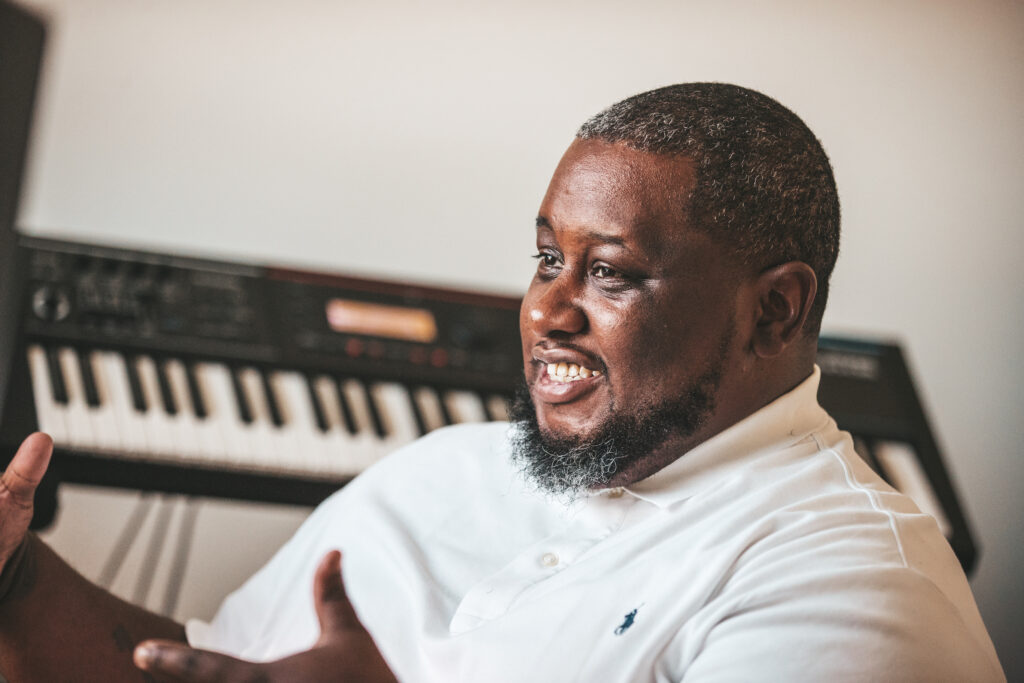After nearly twenty-five years, the beloved Birmingham restaurant Hot & Hot Fish Club, owned by James Beard Award-winning chef Chris Hastings and his wife Idie, is moving to Pepper Place, only a stone’s throw from their hot-spot eatery Ovenbird. With the new location, Chef Hastings has taken the opportunity to re-envision Hot & Hot’s role in the community. This week, he gives us some insight into how both nature and nurture led to an acclaimed culinary career.
Hot & Hot has long had a special place in our city’s culinary culture and a special space in a historic building. What has that space meant to you? What led to your move to Pepper Place, and what has been the most exciting part of this transition?
Our building was built in 1939. It has been the home of three businesses over sixty years, and we have been there for the last twenty-four. There are places in the universe that have real energy, and that building is one of those places. People are drawn to positive energy, and we had an opportunity to be a part of that. We made our bones there. We will serve our last meal at Hot & Hot 1.0 on December 31st and throw a little send-off party from midnight to whenever to say goodbye to our old lady.
When we learned about the plans to sell and redevelop the property, we began to look for a location in a neighborhood on the rise where we could maintain our vision — a place where we could grow into the next twenty-five years.
Years ago, before we opened Ovenbird in 2015, Cathy Sloss Jones asked me to consider this space if I ever moved. I loved the space, but I also wanted to look at all my options. In terms of architecture and design, this new space is so different from what we’ve had. I began to think about how we could carry forward some of who we already were with who we want to be in this next chapter.
I love collaborating, and I get a passion for design from my dad. The food isn’t the only element of Hot & Hot that is important to me — creating the atmosphere is too. I feel fortunate to have had the opportunity to work with some real talented folks who’ve made this place come together and have a light, contemporary feel that reflects our vision and respects the building. I worked closely with Cliff and Leigh Spencer of Alabama Sawyer to use hackberry wood, a local species, to construct our bar and furniture and with Jeremy Rogner for all our metallurgy.
Tena Payne from Earthborn Studios in Leeds makes our pottery. Rob Walker was our architect, Liz Hand Woods consulted on our interiors, The Willingham Company designed our kitchen, and Rives Construction was our contractor. It’s good to have the opportunity to get outside your own discipline, and I’ve enjoyed working with all of these other creatives to create a space with such incredible energy in a dynamic neighborhood.
What is important for you to maintain in this next chapter, and what will change?
I didn’t want to throw the baby out with the bathwater. The patrons in our community who’ve been dining with us for twenty-five years like what we do, and they know that my kitchen is always an evolution and a creative process. A lot of familiar seasonal menu items will stay in place, but there will be a new level of creative and affordable offerings for a more casual dining experience.
We want to broaden our demographic and attract the entire community rather than only being a special occasion spot. I think it needs to be a neighborhood restaurant.
I think the new generation of restaurant patrons are more progressive with their evenings out. They want a place to pop into, meet friends, grab a drink and nibble, and then head to the next location. I want to be able to offer that community space and still have a dining room where people can celebrate significant moments.
Over the course of your career, you have witnessed shifts in dining culture around health and sustainability. How does that dovetail with your own philosophy?
Birmingham is a chef town, not a chain town. And that’s a good thing. The world is getting more focused on health, and that’s great news! Food is medicine. You have to start with good nutrition, and I think people are more aware of that than ever.
I think people are also more aware of the importance of supporting local farmers and wanting to know where their food is coming from. That is integral to our process. We feel a responsibility to source the very best ingredients. I’m proud that we have established a brand of taking risks and offering beautiful and delicious micro-seasonal flavor profiles that celebrate our unique culture and geography.
How did your interest in food begin? What made you pursue a career as a chef?
I spent my childhood summers around Pawley’s Island, South Carolina. I’d stay a month at a time there with my grandmother, mother, and siblings, while my dad traveled back and forth. My job was to go out to the salt marches and dig clams, chip oysters, gig flounder, and catch blue crabs and shrimp. I learned about life, the ebb and flow of the natural world, tidal surge, the moon and its effect on the water and the organisms in the water simply by being there in my happy place. I was just a kid and didn’t know what my career would be, but in hindsight, that experience was teaching me how to be a chef — how to think about where food comes from, the hope of that food — gathering it, cooking it, and sitting at a table with my family to eat it.
My parents were creative. My mother was an actress and a wonderful cook, and my dad was an architect and interior designer who also gardened. We grew flowers and also a lot of our food. My mother was passionate about good food, and when I got a little older, she’d let me pretend I was sick so that I could skip school and go out with her to little delicatessens and local joints or the farmers market.
When I was eighteen, my mother died of cancer. I’d started working in a local restaurant as a busboy and dish washer to earn a little beer and gas money. After my senior year, I planned to go to Appalachian State, but after I lost my mom I decided to take a gap year. The chef at that restaurant took me under his wing and pulled me into the kitchen. It gave me a place to go to and a purpose. It provided me with a way to get through my grief. At the end of that gap year, Chef Daly asked me what I wanted to do — go to App State or culinary school. I got on a train in Charlotte, North Carolina and got out in Providence, Rhode Island where Johnson & Wales College of Culinary Arts was, and that began my culinary career.
What brought you to Birmingham, and what made you stay?
I was working in Atlanta at The Ritz-Carlton and dating a girl at that time who was from Alabama and had worked for Frank Stitt. She suggested we go visit over the weekend and have dinner at Highlands. We went and had a wonderful meal. Frank was looking for a sous chef, and we did some working interviews. We hit it off, and I really liked the team. After several trips back and forth to work together, I was offered the job, and it changed the trajectory of my life.
I moved to Birmingham and ended up meeting my wife of thirty-one years, Idie. She is my parter in life and in business. We work well together and understand both the business and creative sides to what we do and are able to have thoughtful discussions about how to continue to improve. My oldest son Zeb and his wife Molly have also joined the family business, and it’s such a joy to get to spend time with them every day. It’s hard to find second generation restaurants in the broader community, and it’s certainly a particular lifestyle you have to commit to. I’m happy that we’ve been able to build something that they want to take over one day.
Where do you find inspiration, and how does it manifest in your work?
I like to escape into the natural world to hunt and fish and spend time with like-minded friends. I think it’s easy to see that in Ovenbird. Getting together to cook and eat with my family and friends is a place of solace and renewed creative energy for me. I consider myself an artist and a person who is always evolving, and I feel like my art has imitated life.
When you have time off at home, what do you like to eat? Do you have a comfort food?
Ha! I love coming home to leftovers, and I like to eat them cold. I also love a good peanut butter and jelly sandwich — fresh-ground peanut butter and blackberry jam —with an ice-cold glass of milk.





















